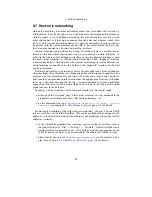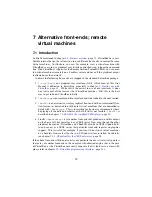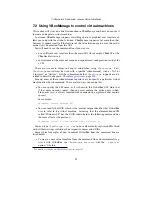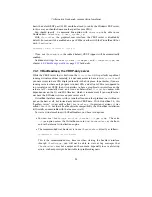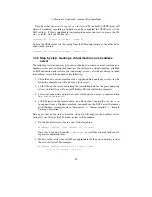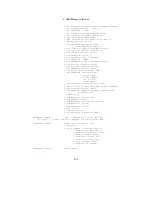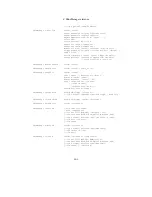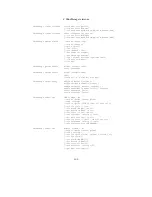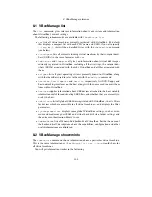
7 Alternative front-ends; remote virtual machines
hosts the default RDP port (3389) could be already used by the Windows RDP server,
in this case you should choose another port for your VM(s).
You should specify
-N
command line option with
rdesktop
to be able to use
NumPad keys:
rdesktop -N host_system_ip
.
With
VirtualBox
, the graphical user interface, the VRDP server is disabled by
default, but can easily be enabled on a per-VM basis either with the VirtualBox GUI or
with
VBoxManage
:
VBoxManage modifyvm <vmname> --vrdp on
If you use
VBoxHeadless
(described below), VRDP support will be automatically
enabled.
Additional settings for
modifyvm
are
--vrdpport
and
--vrdpauthtype
; see
chapter
8.5
,
VBoxManage modifyvm
, page
107
for details.
7.4.1 VBoxHeadless, the VRDP-only server
While the VRDP server that is built into the
VirtualBox
GUI is perfectly capable of
running virtual machines remotely, it is not convenient to have to run
VirtualBox
if
you never want to have VMs displayed locally in the first place. In particular, if you are
running servers whose only purpose is to host VMs, and all your VMs are supposed to
run remotely over VRDP, then it is pointless to have a graphical user interface on the
server at all – especially since, on a Linux or Solaris host,
VirtualBox
comes with
dependencies on the Qt and SDL libraries, which is inconvenient if you would rather
not have the X Window system on your server at all.
VirtualBox therefore comes with yet another front-end that produces no visible out-
put on the host at all, but instead only delivers VRDP data. With VirtualBox 1.6, this
“headless server” is now aptly called
VBoxHeadless
. (In previous versions, it was
called
VBoxVRDP
. For the sake of backwards compatibility, the VirtualBox installation
still installs an executable with that name as well.)
To start a virtual machine with VBoxHeadless, you have two options:
•
You can use
VBoxManage startvm <vmname> --type vrdp
. The extra
--type
option causes the VirtualBox core to use
VBoxHeadless
as the front-
end to the internal virtualization engine.
•
The recommended way, however, is to use
VBoxHeadless
directly, as follows:
VBoxHeadless --startvm <uuid|name>
This is the recommended way, because when starting the headless interface
through
VBoxManage
, you will not be able to view or log messages that
VBoxHeadless
may have output on the console. Especially in case of startup
errors, such output might be desirable for problem diagnosis.
94










